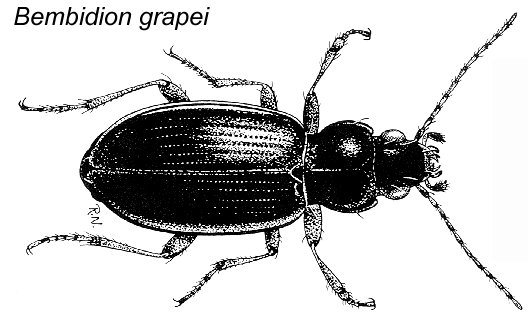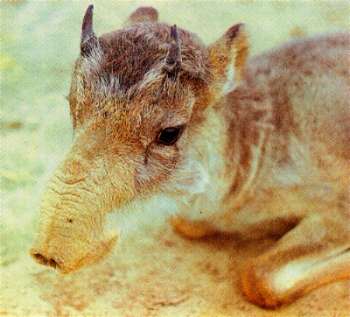


Arctic and Subarctic Climates
Climates are the product of latitude, distance from the ocean, topography, vegetation density, location on a continent, and elevation. Tundra environments are characteristic of polar climates, while subarctic environments are characteristic of continental climates. Beringia is located in both the Artic and Subarctic. The Arctic Circle passes through just North of the center of Beringia. The northern part of Beringia is Arctic while the southern part is Subarctic. With the sea levels down in the Bering Staright, the climate changed from a maritime to a continental climate.
Continental Climate
Continental climates are very extreme. They are characteristically very warm in the summer, and extremely cold in the winter. The continental climate in Beringia produced warmer summers than we experience today. Temperatures were about 3-5 degrees C warmer 10,000 ya (Elias, 1998). Soil profiles and increased thermokarst activity also support that temperatures were warmer. Changes in atmospheric patterns due to the block in the ocean currents made the air very dry, and limited precipitation.
Maritime Climate
The weather on the coast of Alaska today is variable. The coast is colder in the summer than the interior temperatures, but warmer in the winter. Summers days in this Arctic are long, and it stays light most of the time. Winter days are short and dark. Winds are usually 8 to 12 mph. Storms are frequent, and winds can reach 50 to 70 mph. This is the weather and climate when ocean circulation is not blocked in the Bering Straight. (Source: GORP Bering Land Bridge National Preserve website)
Paleoclimate Indicators for Beringia
There are all sorts of fossils that can be used to determine the paleoclimate. Diatoms, arcellations, foraminifera, dinoflagellates, faunal and insects assemblages, fish scales, fossil pollen, tree rings, ice core isotopes, stratigraphy, and the list goes on...



Insects as indicators
Beetle fossils have been used to determine the paleoclimates, habitats, and distribution patterns of their species in Beringia. Contemporanous predator and scavenger beetles are stenotherms, species that live within a narrow temperature range. They leave their environment within a decade when there is a slight change in temperature (Elias, 1998). The insect assemblage from the Chukchi and Bering sea cores indicate a warmer than modern climate in the summer around 11,000 ya, possible 6-10 degrees Celsius higher on the Chukchi shelf.

Fossil beetles are compared to their modern day descendents. Once a species has been matched, then the climate can be determined based on modern day distributions. The surface of their preserved hard parts help identify the genus or species to which the beetle belongs.
Animals as indicators
Saiga Antelope currently live in dry steppes and semideserts, and feed on grasses. They live in continental climates, and travel most efficiently on hard terrain. Saiga tatarica indicates the former presence of dry, steppe-like grasslands in Beringia. Interestingly, the abundance of Saiga across Siberia and Alaska over time correlates well with the peak of the last glaciation (Harington, 1998). The Saiga were most abundant before and after the last glaciation. They became extinct around 12,000 ya in North America probably due to rapid climate and vegetation changes when warming of the climate began. The Saiga on the right lives in Siberia. The distinct nose is believed to be an adaptation to cope with dry air and windblown loess (Harington, 1998).

Physical remnants as indicators
Ice-wedged polygons are good paleo-thermometers. Their size and structure aid in the reconstruction of paleotemperatures. Ice-wedge polygons indicate that winters in the Artic were -100 degrees Celsius, and in the summer the temperatures reached 20 degrees Celsius (Tomirdiaro, 1998) because dry land replaced wet ocean.

